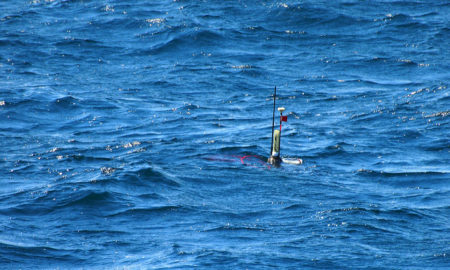 There’s a mixture of relief and joy every time a robotic float is recovered. Years of research and months of intense engineering go into preparing each device for its life at sea, no matter how brief the stint. So when Carbon Flux Explorer 3 sent its ping this afternoon to say that it had surfaced and completed its mission, a day after it was first dropped into the Santa Cruz Basin, the reaction was one of excitement and anticipation.
There’s a mixture of relief and joy every time a robotic float is recovered. Years of research and months of intense engineering go into preparing each device for its life at sea, no matter how brief the stint. So when Carbon Flux Explorer 3 sent its ping this afternoon to say that it had surfaced and completed its mission, a day after it was first dropped into the Santa Cruz Basin, the reaction was one of excitement and anticipation.
Even with the GPS signal, it’s an impressive feat to find and retrieve the float. It is a small target in a large ocean, and the two antennae are black. The people who first saw the robotic float were instructed not to blink. Read More »
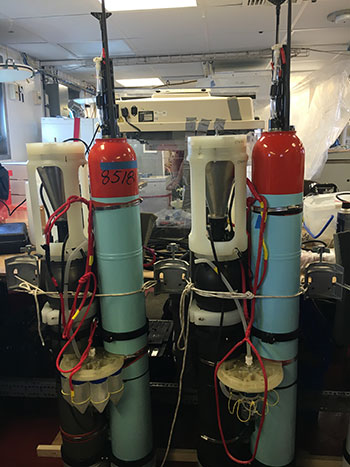 The ocean’s biological carbon pump occurs at very fast time scales, so it has been difficult to study the various environmental dynamics influencing its processes. Determining whether the carbon pump is strengthening or weakening – and why – would require ongoing monitoring that is impractical to do for humans on a ship.
The ocean’s biological carbon pump occurs at very fast time scales, so it has been difficult to study the various environmental dynamics influencing its processes. Determining whether the carbon pump is strengthening or weakening – and why – would require ongoing monitoring that is impractical to do for humans on a ship. 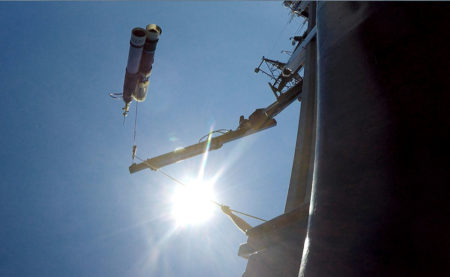 At 2:27 p.m. today, the first Carbon Flux Explorer was deployed, and if all goes well, we will see it again in about 24 hours. Its entry into the water did not come with the cheers I had expected. I was told that this was because many of the researchers had done this before, and there was still a great deal of work to do after the launch. (I still clapped.)
At 2:27 p.m. today, the first Carbon Flux Explorer was deployed, and if all goes well, we will see it again in about 24 hours. Its entry into the water did not come with the cheers I had expected. I was told that this was because many of the researchers had done this before, and there was still a great deal of work to do after the launch. (I still clapped.)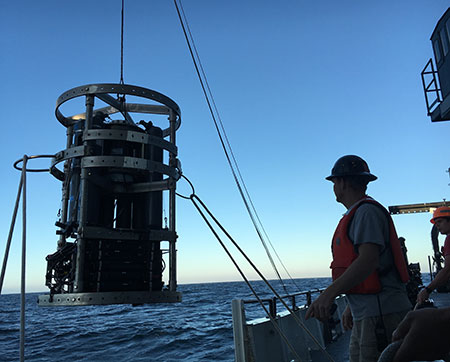 It’s not a great thing when the CTD (Conductivity, Temperature and Depth) Rosette bumps into the hull of the ship, as it did on one of the launches today.
It’s not a great thing when the CTD (Conductivity, Temperature and Depth) Rosette bumps into the hull of the ship, as it did on one of the launches today. 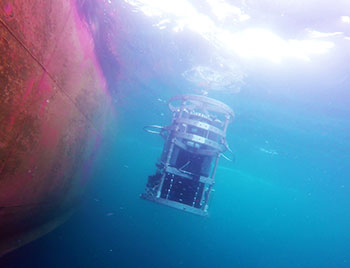 As I started writing this, an array of sensors was taking measurements from the surface to near the bottom of the Santa Cruz Basin. They are being tested with a CTD (Conductivity, Temperature and Depth) Rosette device, which will help researchers characterize the distribution of biomass at different water depths.
As I started writing this, an array of sensors was taking measurements from the surface to near the bottom of the Santa Cruz Basin. They are being tested with a CTD (Conductivity, Temperature and Depth) Rosette device, which will help researchers characterize the distribution of biomass at different water depths. 